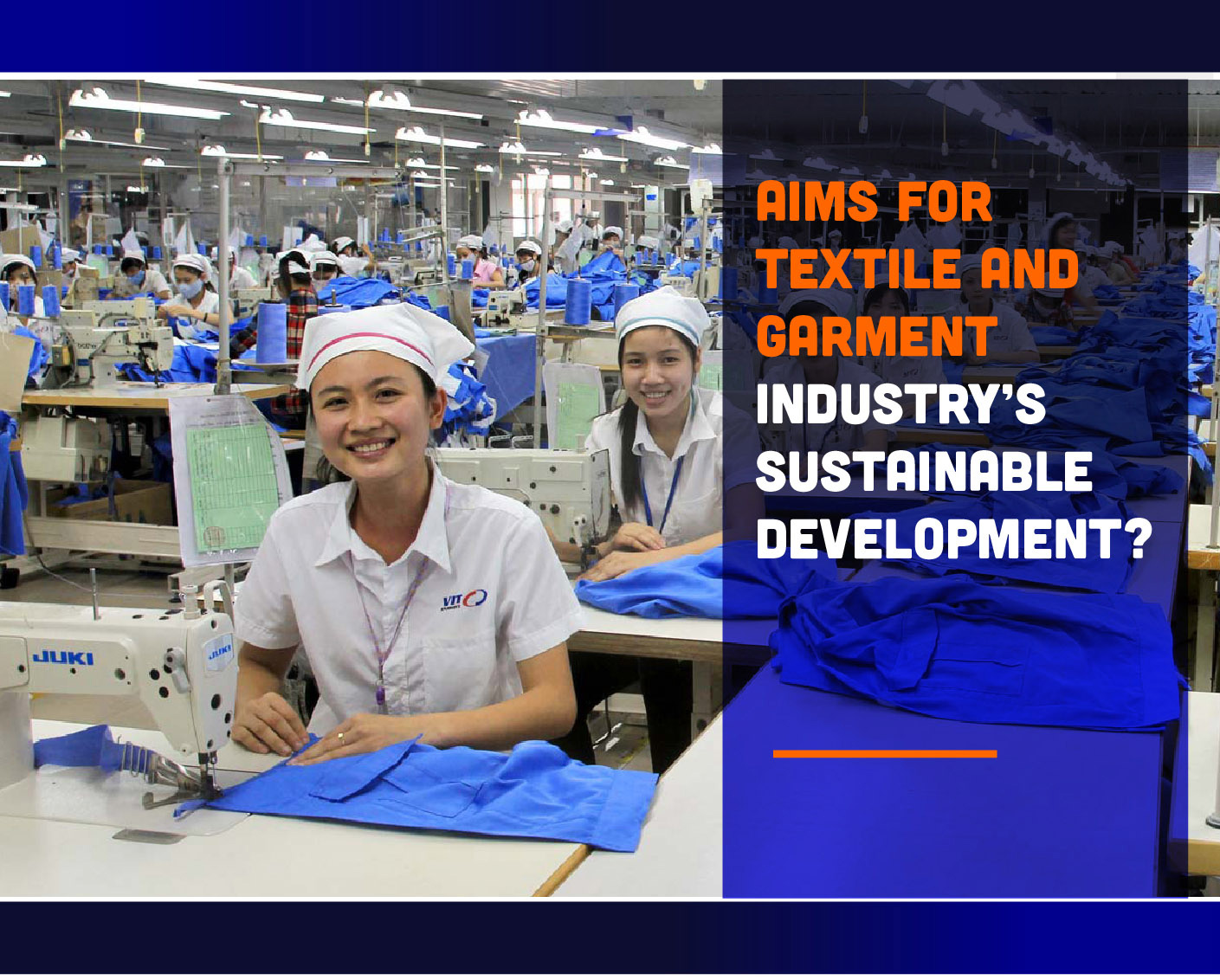
romptly adjusting product mix, lowering labor use, and lessening impacts on the environment and water resources are focuses to orientate Vietnam’s textile and garment industry towards sustainable development and switch from the term “Made in Vietnam” to “Sustainably made in Vietnam”.

![]()

According to Mr Vu Duc Giang, the Chairman of the Vietnam Textile and Apparel (VITAS), there are over 6,000 factories bringing jobs nearly 3 million people nationwide and contributing to about 15% GDP. However, such a rapid growth given lagged behind technology has caused quite a few problems, such as low productivity and limited product models. Meanwhile, there exists ever-increasing demands for diversified textile and garment products, more accurate technology, more competitive market, together with limited labor resources and mounting operating expenses. If businesses manage to promptly adjust product mix, lower labor use and lessen impacts on the environment and water resources, Vietnam’s textile and garment industry will gain competitive edges.

In practice, textile and garment industry is one of those that incur high water consumption, especially in the fabric processing and dying process. On the other hand, this industry also causes water contamination due to the large amount of water discharged from operation. According to the United Nations Economic Commission for Europe (UNECE), a cotton shirt requires 2.7 m3 clean water and 150 gram chemical. A number of fashion companies in the world have invested in garment and textile factories for manufacturing fashion products. In Vietnam, Vietnam National Textile and Garment Group poured nearly VND 5 trillion into textile, dying and related infrastructure. Textile and garment factories use a huge amount of chemicals such as acid, alkaline organic solvent, dye, colorant and surfactant.
Despite full awareness of the existing issues, investment in sewage treatment system is still limited. In particular, factories and industrial zones have difficulty in meeting national standards on discharging sewage due to many different reasons such as inadequate financial capability to invest in sewage treatment technology equipment. Moreover, the low-quality groundwater could interrupt the operation or forces them to switch to other water sources.

![]()

Mrs. Pham Ngoc Linh, representative from MCG Management Consult – a consultant of WWF Vietnam – stated that from 2004 onwards, there have been some projects on environment and water resource protection in Vietnam sponsored by the World Bank (WB) and Japan International Cooperation Agency (JICA). Furthermore, being aware of importance of water resource protection, fashion brands join hand to sponsor to improve and upgrade textile and garment equipment for saving and effective energy use. In particular, Vietnam’s factories receive support from Nike, Gap, Adidas for equipment improvement and upgrade.

However, Mrs. Linh further stated that such projects have limited impacts on the value chain. It is mainly because they focus only on level 1 and level 2 large foreign invested enterprises whereas quite a few small and medium enterprises or industrial zones have yet to receive sponsorship Take Mekong Delta for example. There are now over 130 small enterprises known as satellites of level 1 enterprises. These enterprises have yet to receive support for energy and water savings while they are directly discharging water to the environment. This leaves room for effective support in upcoming years.
Financial resource is one of important issues related to investment in “greenising the textile and garment industry”. Experts indicated that not all enterprises can solve this problem to keep up with ideal progress. Especially, finance-related issues does not only exist at factory level but also industrial zone level. Thus, Mr Vu Duc Giang emphasized that the State needs to build industrial zone with sewage treatment and call for investment in textile and garment factories to facilitate the industry to be competitive.

Century Synthetic Fiber Corp (STK) is considered as a successful example of sustainable development. At onset, the company invested tens of thousands in cleaning environment, carrying out environment impact assessment reports, building sewage treatment system, temporary warehouse of toxic substances, oil hood system for dust and emission treatment, fire protection system and environmental incident prevention equipment. The energy saving scheme also draw up a sound plan, that is, once three years, the Company carries out an energy audit and devise an improvement plan for energy saving; continuously implement the control cycle of Plan-Do-Study-Act (PDCA) in the production and office areas to save energy resources; and use an air close system.
Along with sustainable development, from the scratch, a production assembly has been modernized towards robotics and efficiency enhancement. As a result, the company has entered high-demanding markets such as Japan or transacted with leading brands like Nike. In particular, in 2018 STK has an estimated total revenue of VND 2,400 billion with net profit after tax of VND 175 billion, up by 76.5% as compared to prior year and exceed the budget by 31.1%. Added value to shareholders increases by the 40% increase in STK share value over only 1 year (from VND 14,000/share at the beginning of 2018 to VND 20,000/share now). The increased market capitalization has enabled the company to succeed in raising capital to expand a factory in Trang Bang, Tay Ninh.
The company has developed a plan to build a modern factory to manufacture plastic pellets from petroleum provided to its existing factories.




